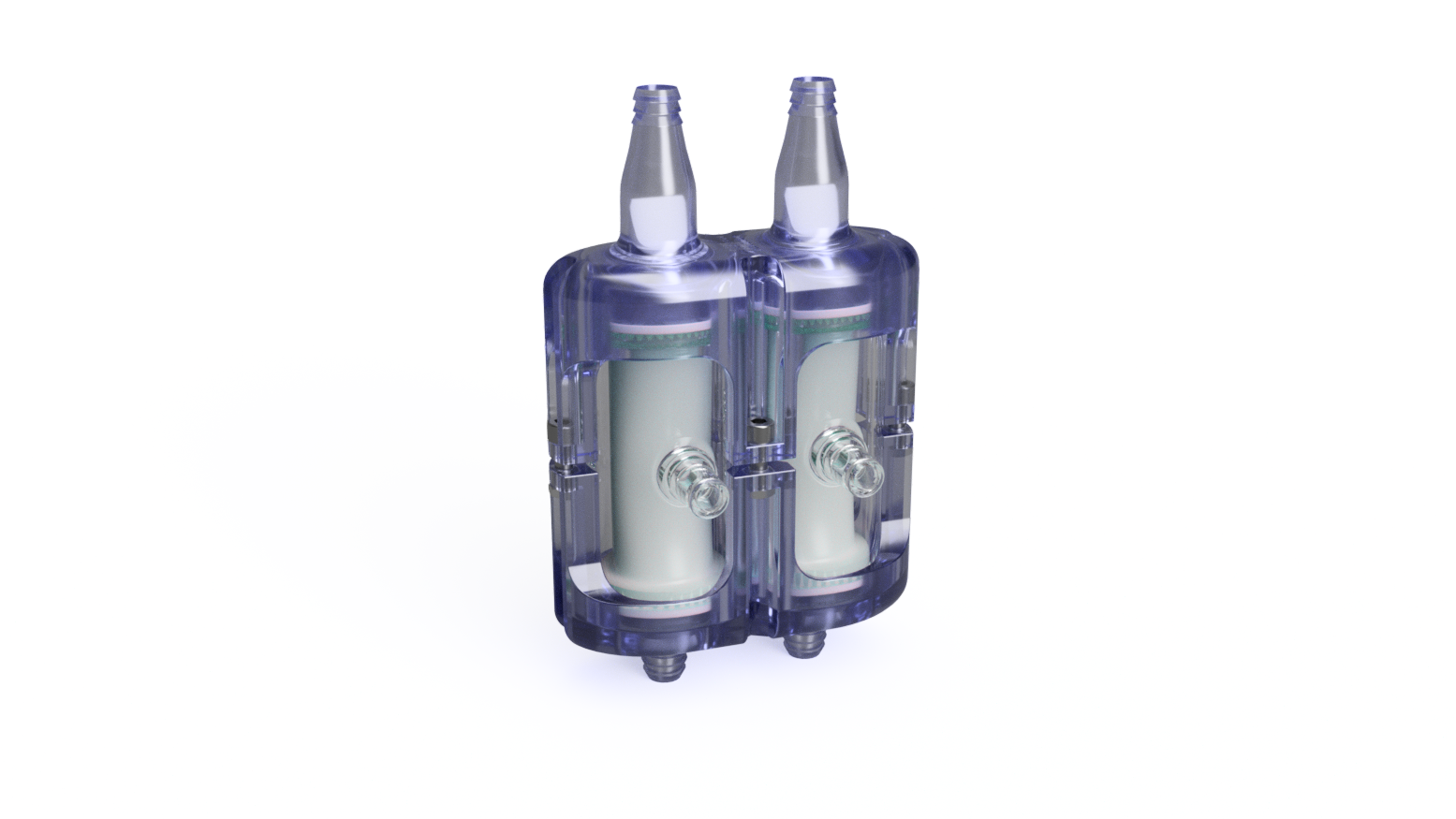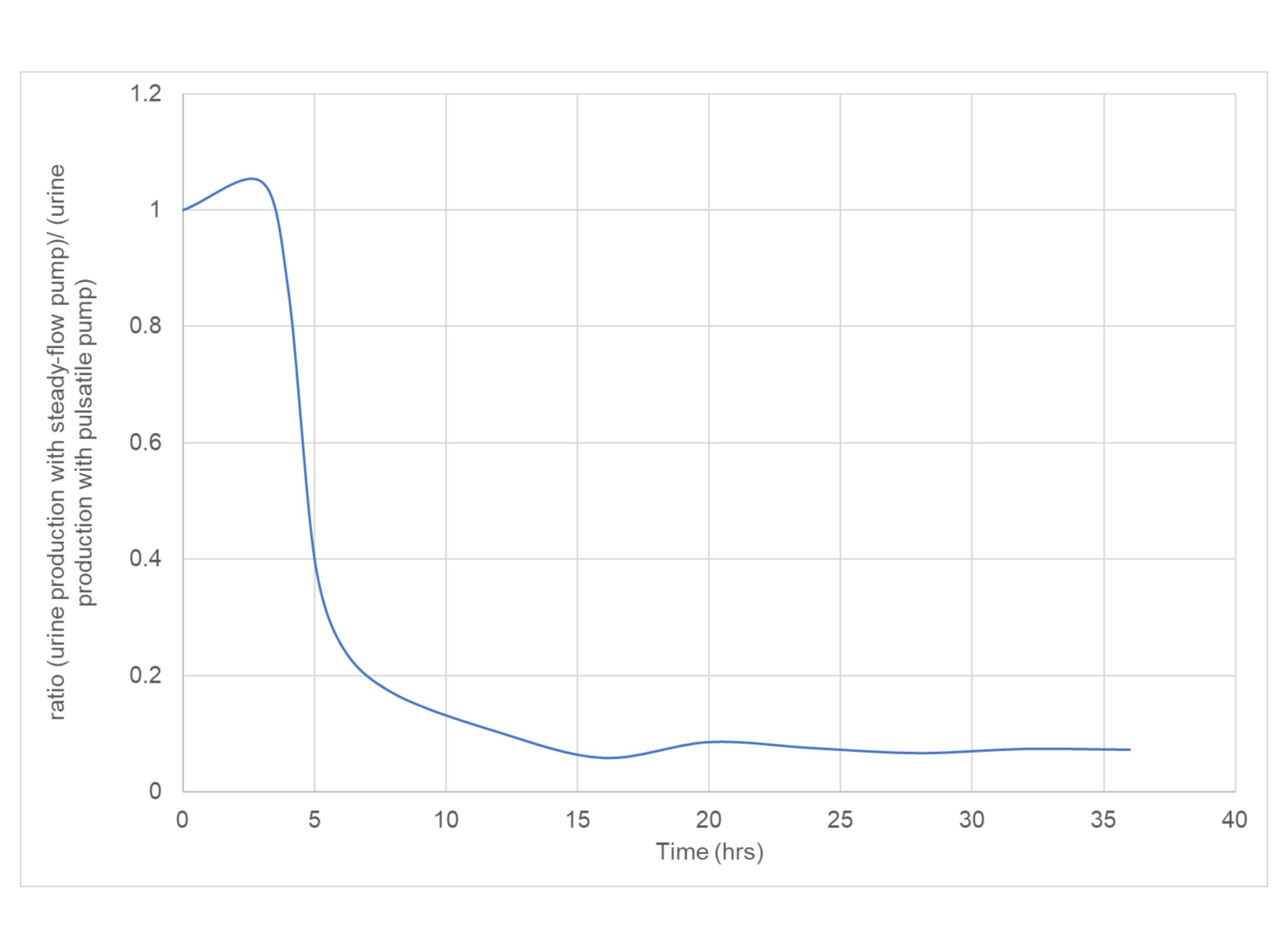Blood Pump
A novel pulsatile, low haemolysis blood pump
All mammals have evolved with beating hearts. Every organ and tissue in the body has evolved to expect a pulsing blood flow. The size and shape of the pulses depends on the position in the body, but all expect a pulsing flow. A pulsing flow delivers more energy than a steady flow and keeps small capillary blood vessels open. These vessels tend to close up with a steady blood flow with observed deleterious effects. These effects include aortic valve failure in the heart, Von Willebrand’s syndrome (resulting in haemorrhage), and “pump head”. “Pump Head” can arise in patients who recover from surgery having been supported by a heart/lung machine with a steady blood flow. The symptoms are mental confusion which can last for months and occasionally for ever. Blood pumps are used for a wide range of applications including cardiopulmonary bypass, extracorporeal life support, and normothermic transplant organ perfusion. Currently, standard practice is to employ centrifugal or peristaltic pumps; both of which give a steady or nearly steady blood flow. Haemair have developed a pulsatile pump that can mimic the pulse profile observed around the body. As well as reproducing the natural pulsing flow of blood, an important consideration is that the pump should not damage the red blood cells. Cells that are damaged no longer function and release their contents into the blood plasma. The damage is known as haemolysis. The innovative Haemair pump has been tested against widely-used centrifugal and peristaltic pumps and found to cause significantly less haemolysis than either.
In ex-vivo perfusion, kidneys perfused using a Haemair pump produced superior urine output and experienced reduced pressure drop.
A range of applications are described under “Organ perfusion system”.

The Haemair pump head design
The pump head is the only part that contacts blood and needs to be replaced when the system is used for another application.
As illustrated, it is a relatively simple and inexpensive item.

Comparison of kidney urine production perfused by centrifugal and pulsatile pumps
Four comparative tests were undertaken each with a pair of kidneys taken from the same animal. The kidneys were perfused ex-vivo with oxygenated blood with one kidney pumped by the Haemair pulsatile pump and the other by a widely-used centrifugal blood pump. For the first 3 to 4 hours, urine production was similar for the 2 pumps. Beyond 4 hours, production rate for the centrifugal pump perfused kidneys fell rapidly. Urine production is taken as a measure of kidney health and we hypothesize that the decline observed for the centrifugally-perfused kidney results from the widely-recognized reduction in capillary blood vessel cross-section that arises in the absence of a pulsing blood flow. Increase in pressure drop across the kidneys was also observed. The results suggest that, with pulsatile perfusion, kidneys remain healthier for longer.





